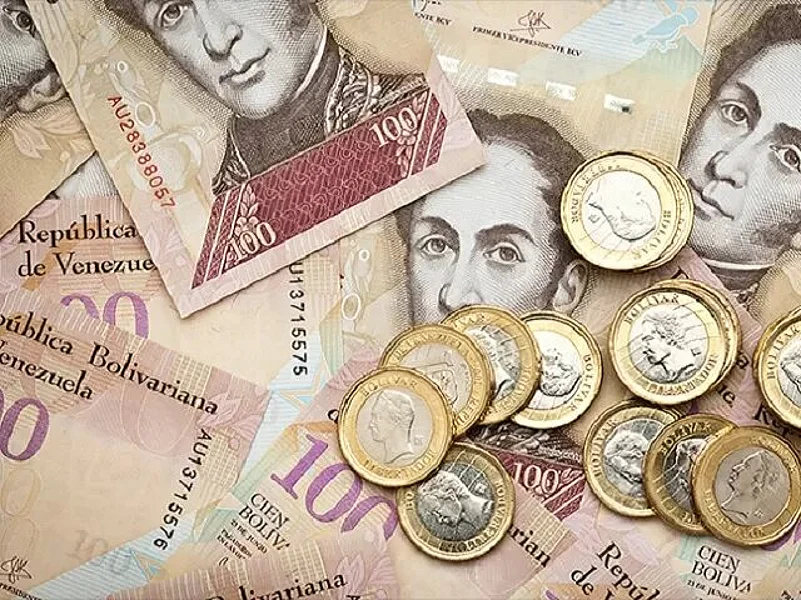A new currency with six fewer zeros debuts Friday in Venezuela, whose currency has been made nearly worthless by years of the world's worst inflation.
The highest denomination until now was a 1 million bolivar bill that was worth a little less than a quarter as of Thursday. The new currency tops out at 100 bolivars, a little less than $25 — until inflation starts to eat away at that as well.
The million-to-1 change for the bolivar is intended to ease both cash transactions and bookkeeping calculations in bolivars that now require juggling almost endless strings of zeros.
“The most important and fundamental reason is that the payment systems are already collapsed because the number of digits make the payment systems and doing the math practically unmanageable,” said Jose Guerra, an economics professor at the Central University of Venezuela. “These debit card payment processing systems or an accounting system for companies... are not intended for hyperinflation, but for a normal economy.”
Under the old system, a two-liter bottle of soda pop could cost more than 8 million bolivars — and many of those bills were scarce, so a customer might have to pay with a thick wad of paper.
Banks allowed customers to withdraw a maximum of 20 million bolivars in cash per day, or sometimes less if the branch was running short.
So, consumers have come to rely on U.S. dollars and digital payment methods, such as Zelle and PayPal, to make purchases. Nowadays, most transactions are made electronically, and Guerra said, more than 60% are made in U.S. dollars.
When Venezuela's Central Bank announced the currency change last month, officials said payment systems will be modernized to expand digital use of the bolivar.
They also underscored that the elimination of six zeros doesn't otherwise affect the value of the currency. The bolivar “will not be worth more or less; it is only to facilitate its use on a simpler monetary scale," according to a Central Bank statement.
This is the third time Venezuela's socialist leaders have lopped zeros off the currency. The bolivar lost three zeros in 2008 under the late President Hugo Chávez, while his successor, current President Nicolás Maduro, eliminated five zeros in 2018.
After more than four years of hyperinflation, many Venezuelans think the new bills will be short-lived as well. The central bank does not publish inflation statistics anymore, but the International Monetary Fund estimates that Venezuela's rate at the end of 2021 will be 5,500%.
“I only had 3 million bolivars in my account, with that you don't buy a single (piece of bread), said Elena Díaz, a 28-year-old cleaning worker standing outside a supermarket. "When they remove the six zeros, with those 3 bolivars, I won't be able to buy anything either.“
The use of greenbacks accelerated after Maduro's government two years ago gave up its long and complicated efforts to restrict transactions in dollars in favour of the local currency — restrictions that only fed inflation.
Dollar bills flow into Venezuela through a network of foreign bank account holders who charge commissions or via people travelling home with cash.
Ahead of the change, some stores already had begun to display three prices for each product, in U.S. dollars as well as new and old bolivars.
Banks said they would freeze operations for several hours between Thursday and Friday to make adjustments for the change.
Guerra, who was an adviser to a former opposition presidential candidate, said Venezuelans are now used to currency adjustments — and more may be coming unless government policies change.
“Basically, if there is no economic program to stop hyperinflation, this will happen again...,” Guerra said.
“The problem is that hyperinflation was so aggressive in 2018 and 2019 that the reconversion of 2018 (when five zeros were trimmed off) was lost in a year and a half.”















